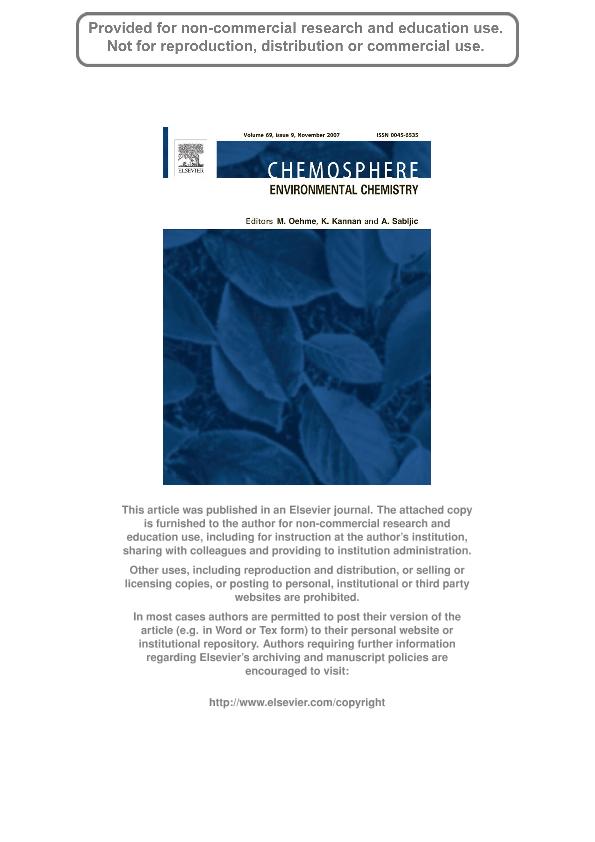Artículo
Complexing capacity of natural waters carrying a great amount of suspended matter
Fecha de publicación:
11/2007
Editorial:
Pergamon-Elsevier Science Ltd
Revista:
Chemosphere
ISSN:
0045-6535
Idioma:
Inglés
Tipo de recurso:
Artículo publicado
Clasificación temática:
Resumen
The cadmium binding properties of waters of the superior section of the Rio de la Plata estuarine were determined over a three-year period. Samples were collected at different hydrodynamic conditions. The complexing capacity was determined by square wave anodic stripping voltammetry (SWASV). Titration curve data were analyzed using a multivariable regression. Suspended particulate matter (SPM) was identified by XR diffraction and FTIR. These analyses showed that SPM principal components are clays (illite, montmorillonite and chlorite). The study was applied to the untreated, filtered and centrifuged fractions of each sample at the pH of the natural waters and at pH 1. The results show that the contribution of dissolved organic matter to the complexing capacity is negligible when compared with SPM. At natural pH, the complexing capacity of filtered and untreated fractions can be described by considering two kinds of binding sites. The associated conditional binding constants are independent of the concentration of suspended matter. Their average logarithms are ca. 6.5 and ca. 4.4. The total concentration of binding sites (ST) is in μM range, which is about three orders of magnitude higher than that reported for most of the studied estuaries. This difference is explained on the basis of the great amount of SPM. Hydrodynamic conditions produce variations in the concentration and composition of the SPM. At pH 1 samples still exhibit an important complexing capacity with only one binding site with log Kcond ca. 5.4. These differences could be attributed to superficial modifications that take place at very low pH.
Archivos asociados
Licencia
Identificadores
Colecciones
Articulos(INQUIMAE)
Articulos de INST.D/QUIM FIS D/L MATERIALES MEDIOAMB Y ENERGIA
Articulos de INST.D/QUIM FIS D/L MATERIALES MEDIOAMB Y ENERGIA
Citación
Minaberry, Yanina Susana; Gordillo, Gabriel Jorge; Complexing capacity of natural waters carrying a great amount of suspended matter; Pergamon-Elsevier Science Ltd; Chemosphere; 69; 9; 11-2007; 1465-1473
Compartir
Altmétricas




